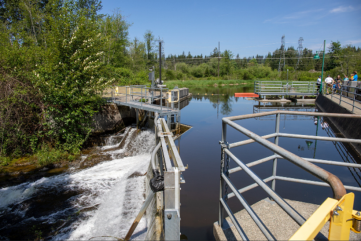
The US Department of Energy (DOE) has released a new report highlighting five significant gaps in the domestic hydropower supply chain and recommending actionable solutions. The report, titled “Hydropower Supply Chain Gap Analysis,” examines various sectors of the hydropower supply chain, from mining and extraction to installation and construction.
Hydropower accounts for about 27% of renewable electricity generation in the US and is crucial for achieving a 100% clean electricity sector by 2035. Ensuring a robust domestic supply chain is essential for supporting new construction, upgrades, refurbishments, and relicensing of existing facilities.
Jeff Marootian, Principal Deputy Assistant Secretary for Energy Efficiency and Renewable Energy, emphasized the importance of hydropower in the energy mix. “As more variable renewable energy sources like solar and wind are incorporated into the US electricity grid, hydropower will play a key role in keeping it reliable and stable,” Marootian said. “These new recommendations will strengthen the domestic supply chain needed to enhance our nation’s hydropower capabilities.”
Drawing on feedback from hydropower industry stakeholders gathered by DOE’s Water Power Technologies Office (WPTO), the report identifies the following five major gaps:
- Unpredictable and variable demand signals for materials and components: Hydropower systems have long lifespans, leading to replacement and refurbishment cycles spanning years or decades.
- Limited or nonexistent domestic suppliers for materials and components: Some materials and components have few or no domestic suppliers.
- Federal contracting procedures and domestic content laws: Procurement regulations and practices hinder the development of the domestic hydropower supply chain.
- Foreign competition and ineffective trade policies: Inequitable competition from foreign companies and ineffective trade policies pose challenges.
- Shortage of skilled workers: The industry lacks skilled workers due to offshoring over the past 40 years, with many experienced workers retiring or moving to other industries.
To address these gaps, the report recommends:
- Federal leadership to create a consistent demand signal: Leveraging the significant demand from federal hydropower facilities to drive the development of a stable supply chain.
- Increasing awareness through databases: Developing tools to predict demand and creating databases of domestic suppliers.
- Collaborating with other industries: Working with other low-carbon technology industries to generate a steady demand for common materials.
- Continuing workforce development efforts: Expanding educational programs and experiential opportunities to raise awareness and build expertise in hydropower.
These recommendations aim to guide DOE’s strategies in strengthening the domestic hydropower supply chain. They will help inform policies, incentives, loan programs, and technology investments to encourage domestic content and support workforce development.
A webinar on September 5, 2024, will feature U.S. Secretary of Energy Jennifer M. Granholm, WPTO experts, and industry stakeholders discussing the report’s findings and recommendations.
The “Hydropower Supply Chain Gap Analysis” builds on previous assessments and responds to Executive Order 14017, which directs the Secretary of Energy to report on supply chains for the energy sector industrial base and aims to secure and diversify U.S. supply chains, including those for energy.






